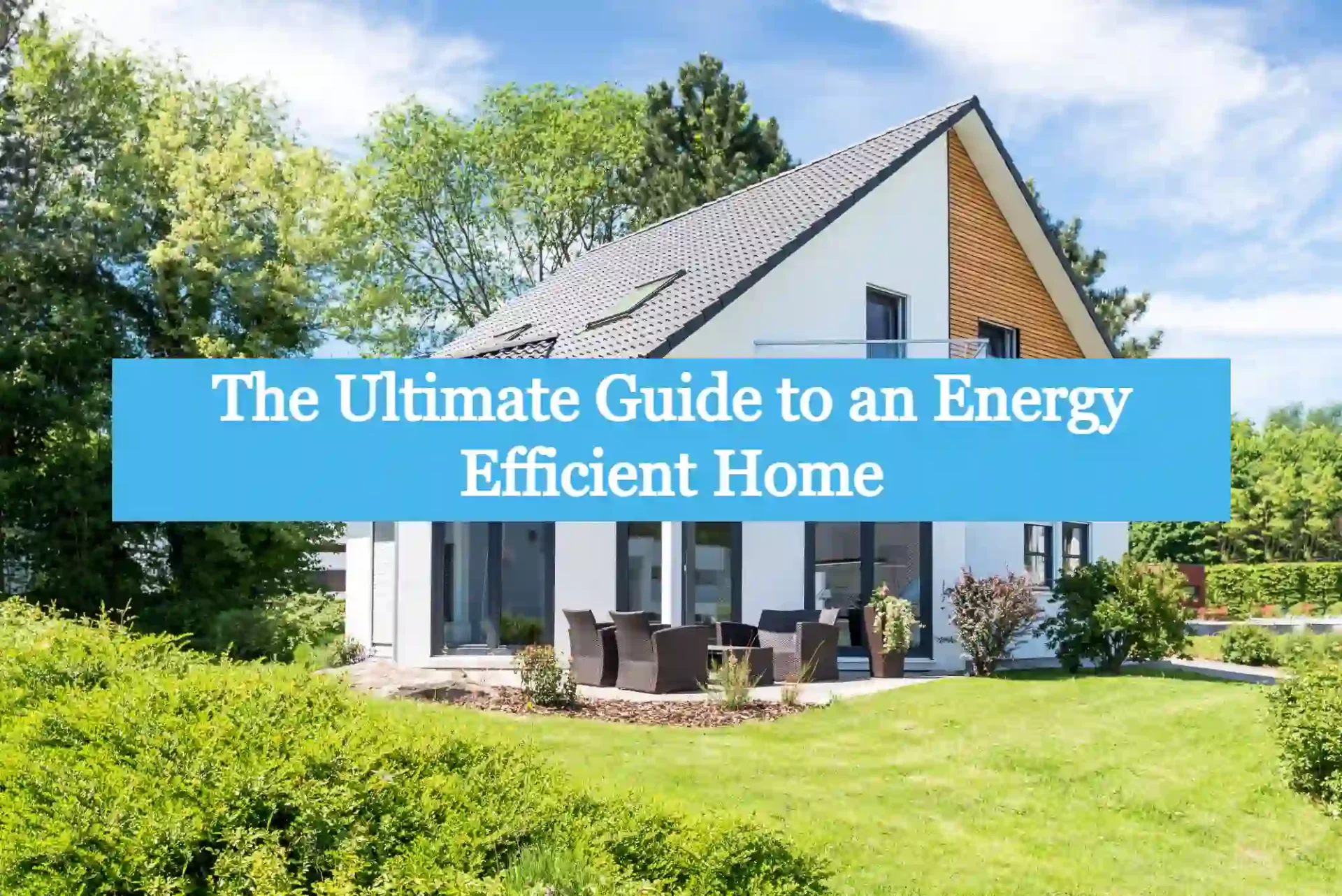Are you interested in saving money on utility bills while protecting the environment? If so, then you’ll probably want to build an energy-efficient home.
Doing so can help you achieve many goals. It’ll enable you to reduce your carbon footprint while making your house easier and more comfortable.
With that in mind, it’s wise to familiarize yourself with some top tips for making an energy-efficient home. Doing so can help you improve your home’s energy efficiency and save money.
See below for an in-depth guide to making your house more energy-friendly.
Consider Renewable Energy Sources
Renewable energy sources are environmentally friendly. It can reduce your reliance on non-renewable energy sources such as fossil fuels. Some examples of renewable energy sources for your home include solar panels, wind turbines, and geothermal systems.
When considering renewable energy sources, it’s important to do your research. Determine which options are best for your home and location. Consider factors such as upfront costs, energy output, and maintenance requirements.
Renewable energy is now more accessible with technological advancements and the increasing availability of incentives and financing options. Here are some of the things you need to know about them:
Solar Panels
Solar panels are one of the most popular options for homeowners and can be installed on the roof or in the yard. They convert sunlight into electricity to provide your home’s energy needs.
Some benefits of solar panels include low maintenance, easy to install, and usually quite affordable in the long term. Solar panels help homeowners save money on energy bills and use a green energy source. They also reduce greenhouse gas emissions into the atmosphere.
If you are considering going solar, read these important FAQs linked here.
Wind Turbines
Utilizing the natural force of the wind, wind turbines can generate a large amount of energy with minimal inputs. Depending on the size and type of turbine, you can create enough energy to power your entire home or just certain appliances.
Installations are relatively easy, and they don’t require too much maintenance. Wind turbines can be especially effective in areas with high average winds.
Geothermal Systems
This technology powers your home with renewable energy rather than relying on electricity or gas. Geothermal systems heat and cool your home using the Earth’s underground temperatures. It can help save up to 80% on your energy bills.
These systems are long-term investments and are highly efficient. With minimum maintenance, it can last up to 25 years.
Insulate Your Home
Insulation materials come in various types, such as fiberglass, cellulose, or spray foam. The type of insulation you choose will depend on your budget, the climate in your area, and the area of your home that needs insulation.
Proper insulation can also help to reduce noise pollution from outside. It can also improve indoor air quality by reducing the amount of outdoor pollutants that enter your home. Here are some of the things you need to know about them:
Fiberglass
Fiberglass can be used to make insulation more durable and longer-lasting. It also reduces air leakage, as it can fit snugly around windows, doors, and other openings.
It is an effective barrier against pests, insects, and more. It can also provide added soundproofing, keeping noise from outside sources from distracting residents.
Cellulose
Cellulose insulation is made primarily from post-consumer recycled paper materials. It significantly reduces heat transfer, seals air leaks, and provides an effective barrier between the interior and exterior of the home.
When properly installed, cellulose insulations can not only save you up to 15 percent on your energy bills. It will protect your home from air infiltration and your family from harmful dust and allergens. Cellulose insulation is also fire-resistant.
Spray Foam
It is a spray-on material used to insulate walls and attic floors. It also forms an air-tight seal around electrical outlets, switches, and windows. It can improve the efficiency of your home’s heating and cooling systems. It can also help reduce airborne pollutants, dust, and allergens.
Spray foam is also eco-friendly, using fewer resources than other insulation options and taking less energy to install. It can be used in new construction and existing homes alike.
Seal Air Leaks
Air leaks can be a major source of energy waste in your home. Sealing air leaks can help to reduce your energy bills and improve the comfort of your home. Air leaks occur when there are gaps and cracks around your home’s windows, doors, and other areas.
These leaks can cause drafts, making your home less comfortable. It also causes your HVAC system to work harder than necessary.
To seal air leaks, you can use caulking or weatherstripping. Caulking is filling and sealing gaps, cracks, and joints. The most common uses of caulking within a home are around windows and doors, electrical and plumbing penetrations, and gaps around the roof line.
When applying caulking, use an acrylic-based sealant for long-lasting results. Before adding the new caulk, you must ensure that the surface is clean, dry, and free of old or deteriorated caulk.
Also, you should carefully apply the caulk in long, straight lines and avoid overfilling the areas with the material. Doing so will ensure that the caulk is not visible and is efficient against air and water leaks.
It’s important to note that finding all the air leaks in your home can be a challenging task. But, there are several methods to locate air leaks.
One way is to conduct a home energy audit to identify areas where air leaks from your home. You can also use a thermal imaging camera to detect air leaks, as these cameras can identify areas where heat is escaping from your home.
Upgrade to Energy-Efficient Appliances
Upgrading to energy-efficient appliances is another effective way to improve energy efficiency in your home. Energy-efficient appliances use less energy than traditional appliances, which can lead to significant savings on your monthly utility bills. When shopping for new appliances, look for those with an Energy Star rating, which means they meet strict energy efficiency guidelines set by the U.S. Environmental Protection Agency.
Upgrading to energy-efficient appliances can also have other benefits beyond energy savings. For example, modern refrigerators are designed to keep food fresher for longer, reducing food waste.
Energy-efficient dishwashers use less water, which can help to conserve this precious resource. Energy-efficient washing machines also use less water and can help prolong your clothes’ life.
Energy-efficient appliances may cost more upfront than traditional appliances. But, the long-term savings on your energy bills can make up for the higher initial cost. Also, many energy-efficient appliances come with rebates and tax credits, which can help to offset the cost.
Consider donating your old appliances instead of throwing them away when upgrading them. Many organizations accept used appliances and refurbish them for use in low-income households. This is an environmentally friendly way to dispose of your old appliances while helping those in need.
Use LED lighting
LED (light-emitting diode) lighting uses less energy than traditional incandescent lighting. It is an excellent choice for homeowners looking to reduce their energy bills and increase environmental impact.
LED lighting also has a longer lifespan than traditional lighting. You will need to replace bulbs less frequently.
They are also more durable and resistant to damage. This makes them a safer choice for homes with children or pets.
When shopping for LED bulbs, look for those with a high lumens-to-wattage ratio. Lumens are a measure of brightness. A higher lumens-to-wattage ratio means the bulb is more energy-efficient.
LED bulbs also come in a variety of color temperatures, ranging from warm white to cool white. Warm white is best for creating a cozy, inviting atmosphere in living spaces. Cool white is better for lighting tasks in kitchens and bathrooms.
LED bulbs may cost more upfront than traditional incandescent bulbs. However, they are a better long-term investment. This is due to their energy efficiency and longer lifespan. Also, many utility companies offer rebates and incentives for homeowners who switch to LED lighting.
Use a Programmable Thermostat
Using a programmable thermostat is another effective way to improve energy efficiency. A programmable thermostat allows you to set your home’s temperature based on your schedule. It can lead to significant energy savings by reducing the time your heating or cooling system operates.
With a programmable thermostat, you can set different temperature settings for different times of the day or week. For example, you can program the thermostat to lower the temperature at work or sleeping. You can increase it when you are at home.
This ensures that your heating or cooling system only operates when necessary. As a result, it saves energy and reduces your utility bills.
Many programmable thermostats also come with advanced features, such as Wi-Fi connectivity. It allows you to control your thermostat from your smartphone or tablet.
This feature can be handy if you are away from home. This way, you can adjust the temperature remotely.
Create an Energy Efficient Home Today
From making energy-saving changes inside the home to taking steps outdoors to increase energy efficiency, this ultimate guide has provided an overview of key strategies homeowners can take toward building a green and sustainable home. Implement these strategies, and you too can reduce your consumption in your energy-efficient home while saving money and the environment. Don’t wait, contact your local energy efficiency expert today to get started!
Please keep returning as we add even more helpful tips to our blog.




